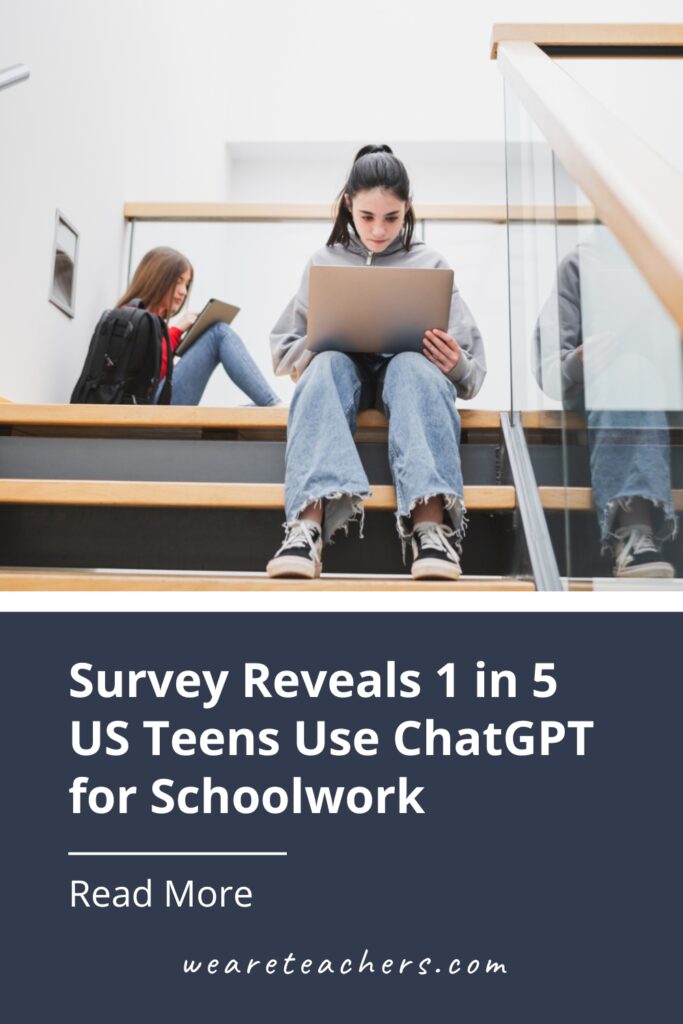ChatGPT is a powerful AI tool capable of writing essays, solving problems, and generating code, and while it has significant potential as an educational tool, concerns about academic dishonesty have been raised. This is due to its ability to produce high-quality work with a few clicks of a mouse, which raises questions about how teachers are supposed to measure student learning.
The use of artificial intelligence (AI) tools like ChatGPT by students is rapidly increasing in schools. A Pew Research Center survey highlights this shift, revealing that around one in five U.S. teenagers familiar with ChatGPT have used it for schoolwork. This development is reshaping the dynamics of learning and teaching in the classrooms, prompting teachers to reevaluate traditional educational approaches.
Which students are using it
The survey revealed a disparity in ChatGPT awareness among different racial and socioeconomic student groups. While higher-income white students are more likely to be familiar with ChatGPT, students who are Hispanic, Black, or from lower-income families are less likely to have used this technology. But one professor in Buffalo pointed out that banning ChatGPT from schools would be bad for low-income and minority students because they might not have access to resources outside of school.
In a world where AI is increasingly influential, it’s really important that students have equal access to these kinds of tools. Rather than just banning ChatGPT in schools, it might be more effective to use it as a learning resource. This way, we’re acknowledging that students are probably going to use these tools one way or another, so it’s better to guide them on how to use them responsibly and effectively.
How schools are responding
Schools are evolving in response to the AI revolution. In New York City, after initially banning ChatGPT for schoolwork, the Department of Education shifted its stance, now endorsing its use and providing educator training to integrate AI into curricula. This reflects a broader trend where schools, recognizing the futility of outright bans, are opting to regulate and guide AI use. The decision aligns with perspectives shared in the New York Times, which emphasize ChatGPT’s potential as a creative and educational tool rather than a threat.
Also, lots of school districts are putting in place their own rules for using AI, like letting students use it but only when a teacher’s watching, and making sure they cite it in their work. This is similar to the idea of treating ChatGPT a bit like using calculators for math: They’re OK for some things, but you can’t use them for everything. It’s about finding a balance where this tool is helpful but doesn’t do the work for students.
The U.S. Department of Education is also involved, issuing guidance that underscores AI’s role in personalized learning while raising concerns about surveillance risks. However, technological solutions like ChatGPT for schoolwork are here to stay, demanding adaptation rather than avoidance. Instead of a futile effort to ban AI tools, educators should focus on redesigning lesson plans and embracing AI’s potential to enrich learning experiences.
This view encourages a forward-thinking strategy, where teachers use AI tools like ChatGPT to enhance learning and get students ready for a future that’s heavily influenced by technology. The goal is to keep up academic honesty while also encouraging critical thinking and creativity. It’s about equipping students for a world where AI plays a big role.
Teachers need support
Teachers should receive training on effectively incorporating AI into their teaching strategies. The International Society for Technology in Education, along with other organizations, offers courses that can help educators navigate this new terrain. Such training is essential for preparing students for a job market where AI is becoming increasingly integral.
As we move forward, it’s really important for teachers to keep up with the ongoing discussion about AI in education. By joining forces to encourage responsible and ethical AI use, we can make sure it’s a beneficial tool for enhancing education and getting students ready for what’s ahead. It’s all about welcoming this exciting new tech but also remembering the value of promoting critical thinking, creativity, and academic honesty in our students.
The real task for educators is to smartly tap into ChatGPT’s capabilities. It’s not just about making lessons more engaging—it’s also about equipping students with essential skills for a future where AI is increasingly common.
For more articles like this, be sure to subscribe to our newsletters.


